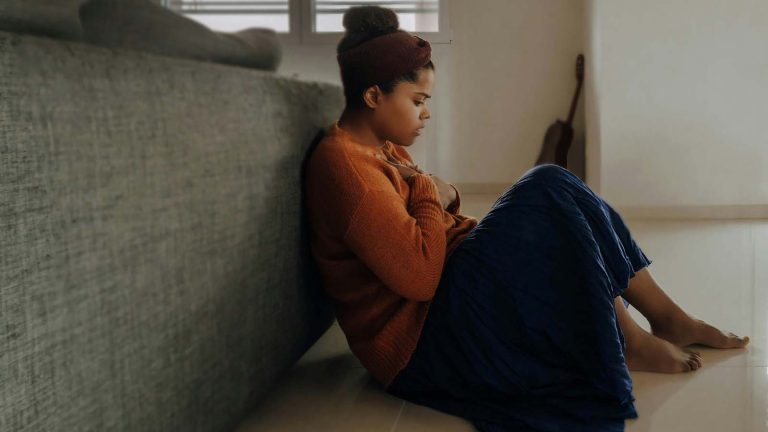For young people around the world, climate change no longer seems like a distant threat but a reality.
A recent study published in the peer-reviewed journal The Lancet Planetary Health surveyed 10,000 young people in 10 countries. A shocking 59% of people are very or extremely worried about climate change, while the vast majority (84%) are at least moderately concerned.
Those who experience climate-related disasters experience increased mental stress: nearly one-third of people affected by disasters are likely to experience negative mental health consequences, such as post-traumatic stress disorder, anxiety, or depression. Children, especially, bear a huge emotional burden.
Given these realities, we must provide our children with the mental and emotional tools to navigate this ever-changing world. We must move beyond teaching abstract concepts and focus on practical, practical solutions that empower young people and support their mental health and emotional resilience. Three promising strategies are emerging.
Teach children to design connected spaces
When faced with climate catastrophe, children feel anxious about the fate of plants and animals, as well as the fate of themselves and their families. We already know that nature play and education can increase children’s self-confidence, self-regulation and care for the environment. Some schools are now involving children themselves in co-designing and creating spaces where they can feel safe and connected to nature and community. This hands-on approach is not only educational but also provides a sense of agency and control.
In New York City, for example, some 220 schools, such as Brooklyn's Pacific School (PS 38K), participate in the Green Neighborhood Campus initiative, transforming asphalt playgrounds into more natural and vibrant spaces. The program integrates students into the design process, teaching them ecological design principles from stormwater management to gardening with native species, then giving them the freedom to design their own spaces.
In Quito, Ecuador, a city recently hit by unprecedented urban wildfires, a school encouraged students to respond through actionable actions, such as cleaning the campus and participating in the forest restoration process by planting drought-resistant species. Carolina Ulloa, the school's director of human development and academics, explained that teachers don't want to teach children to control nature, but rather to develop a sense of belonging in a community that cares for plants and animals.
Teaching nature-based solutions
It turns out that introducing children to practical, nature-based strategies for cooling the planet can turn abstract, anxiety-provoking problems into concrete action.
For example, initiatives like the Mycelium Youth Network help low-income youth respond to climate change through participatory, hands-on education programs that promote skills, environmental justice, and creative expression, effectively reducing feelings of helplessness.
Read: Gamers help kids explore climate change
The organization's programs include urban gardening workshops, where young people can learn to grow food sustainably, and climate technology classes, which teach students to build solar equipment and air filtration systems. Students say the program has improved their lives because they feel supported as they think about solutions for their school and community.
At Mine, the Quito school mentioned above, students of different ages plant permaculture orchards, help care for the seeds in the greenhouse, work with biomaterials and natural tones, learn about the origins of the materials they use, the impact they have on the environment and the economy they benefit from body. All of this helps students develop a greater sense of self-efficacy and control when facing climate anxiety.
Promoting youth-led climate action initiatives
Started by a 9-year-old in 2007, Planting for the Planet has grown into a global movement in which children educate each other about climate change and take action to plant trees.
To date, the initiative has planted approximately 20 million trees globally and empowered thousands of young climate justice ambassadors. These efforts highlight the powerful role young people can play in addressing global challenges. By empowering young people to act, these programs not only help combat climate change but also instill a sense of agency and hope that may reduce climate anxiety among young people.
To be sure, none of these solutions are the final answer to climate change or children’s anxiety. But they do offer evidence-based ways to reduce stress while also giving young people the tools to feel resilient and improve their ability to care for their environment.
At the 2024 United Nations Climate Change Conference (COP29) in Baku, Azerbaijan, world leaders focused unprecedented attention on the critical role of education in combating climate change, recognizing that empowering youth is key to building resilience. We would add that this is essential to safeguard their well-being and physical and mental health.
We have a responsibility to prepare our young people not just intellectually, but emotionally and practically for the world they will inherit.
Ana María Durán Calisto is an Ecuadorian architect, urban planner, and Yale School of Architecture scholar. Cristiana Baloescu is a physician and assistant professor at Yale University School of Medicine in New Haven.
Only 28% of U.S. residents regularly hear about climate change in the media, but 77% want to know more. By 2025, you can show Americans more climate news.
